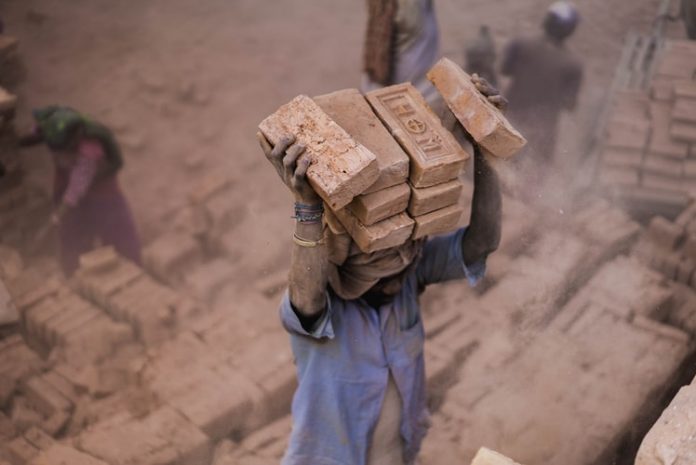This article is written by Shubhankar Tiwari, a B.A.LL.B.(Hons.) student of National Law University, Delhi. In this article, the author discusses the labour movement and the evolution of its concerned legislations.
History of the Legislations
In the earlier leg of Industrialization, the British Government didn’t make any progressive attempt towards regulating the working conditions and the wages of the workers. However, a set of successive factories act were passed between 1881 and 1914 in response to the political pressure thrusted on them and the sporadic outbreaks of protest against the factory.
During the second decade of the twentieth century most of the countries in the world were engulfed in the First World War (1914-1918) which brought two major changes in the scenario of Indian working class:
Firstly, besides accelerating the growth of industrialization (as several factories were required for adequate and instant supply goods and accessories during war time) it also changed the composition of the working class, as the unskilled labourers of the previous era were replaced by skilled labourers required for making weapons and other necessary types of equipment.
Secondly, inflation and food shortages became very obvious consequences of the war thereby increasing the plight of the labourers. At the same time the combined effect of the Bolshevik Revolution in Russia, Indian Swadeshi Movement and establishment of International Labour Organization gave the labourers in our country to raise voice against the inhumane working conditions devised by the British Government and force it to pass labour legislations aimed at seeking a just and fair wages, and working conditions.
Consequently, in order to stifle the worker movement the British Government passed the Fourth Factories Act in 1922, aiming at regulating the working hours according to normal fitness and comfort of the workers.
Another significant legislation passed during this period was The Workmen’s Compensation Act, 1923 concerned with providing remuneration and wage to the workers in case of accidents occurring in course of their employment. It defined several vexed concepts of partial, total and dependent disablement and also the statutory as well as tortuous liability of an employer in such a scenario. These laws were passed by the British Government to depict to the general public that they wanted to ameliorate the working conditions in the nation but were actually nothing except for a part of a defence mechanism to prevent the growth of an ongoing movement which had the potential to overthrow them in the forthcoming years.
The Payment of Wages Act, 1936 laid stress on the significance of regularity in the payment of wages in an enterprise and also stipulated the wage composition by providing for the emoluments and authorized deductions in various scenarios. It can, therefore, be inferred that these legislations made efforts to ensure that the workers in our country got access to the minimum standards of living.
There were a few legislations which had started evolving as early as in the twenties of the nineteenth century, clearly defining the scope of industrial relations in our country. However, they took form of a statute a century later. Some of those legislations were The Trade Unions Act, 1926 which laid down the foundation of cooperative legislation (when the government realized the significance and indispensability of trade unions in facilitating the coordination between the workers and capitalists in a capitalist society) and The Industrial Disputes Act, 1947 primarily aiming at protecting the workers from arbitrary dismissal and creating worker’s council in factories with over a hundred workers.
The Payment of Wages Act, 1936 aimed at removing the payment related malpractices by laying down the wage periods and time, and checking the undue deduction from the wages. To deal with the underpayment and exploitation of labourers The Minimum Wages Act, 1948 was passed. The Payment of Bonus Act, 1965 was concerned with the maximum and minimum benefit that an employee in an establishment with 20 or more people on its rolls should get.

There were certain legislations which covered the area of the social security of an employee covering the areas of sickness, employment injury, retirement, maternity and so on. Namely they were the Employees’ State Insurance Act, 1948, Employees’ Provident Fund and Miscellaneous Provisions, 1952 and the Payment of Gratuity Act 1972.
Therefore, it is very much evident from the evolution of labour laws that there were certain discernible trends and the areas covered by the laws were in accordance with those trends. In the beginning the focus was on the worker as an individual who needed protection from the vicious cycle of unjust enactments laid down by the government. Then the focus gradually shifted towards treating the workers as the members of a group which needed upliftment and betterment of the working conditions. Finally, the industrial relations assumed the centre stage where stress was laid upon removing the inequality in the bargaining power between the workmen and the capitalists.
Common Misconceptions Prevailing
The most basic misconception in the minds of people while referring the ‘labour’ section is confining themselves to the idea of ‘industrial labour’ and the ‘working class’. Hadn’t it been India, the contention would have been substantially correct. However, ours is an agrarian economy so it is imperative on our part to be concerned with both the sides of the coin.
The root cause of this misconception was India being a colony of UK which was the centre of industrialization and whose population was mainly composed of the industrialized working class. Moreover, the UK was the first country to undergo industrialization. Even if we look at the pre-independence legislations passed in response to the demands of the labour movement, we conclude that the British Raj was mainly concerned with the industrial sector. And to be even more specific, the organized section of the industrial sector despite the fact that 93% of the industrial sector comes under the unorganized category. The organized sector falls under the ambit of the trade unions, which we discussed was under limelight in the last leg of the labour legislation done by the Raj. As a matter of fact, even around 1991 when the labour force in our country was around 317 million about 63% of the labour force in India was still agrarian.
Taking both, the practical and the theoretical aspects into account we realize that there is a clear cut difference between ‘trade unions’ and ‘labour movement’. The value of studying these points of distinction is that it helps us in comprehending the fact that the movement consisted not only of the industrial sector but also other areas which were left unexamined by most of the scholars. And thereby prevent us from making the mistake of trying to understand a movement by solely examining the trade unions.
Firstly, the movements unlike the trade unions have frayed edges and loose textures which do not enroll the participants for a membership fee like a trade union does.
Secondly, a trade union’s primary objective is to bargain for betterment on behalf of the workers while being a part of the existing framework whilst a movement aims at bringing a change in the system to improve working conditions.
Thirdly, the goals pursued by the trade unions are in general considered to be legitimate by the State, capitalists and management. On the other hand the objectives of a movement are radical in nature and the means to realize them may not always be acceptable to those before whom they are placed.
These points clearly show that movement and trade union weren’t synonymous. The points of contention are of such significance that they formed the reason behind the split of the Communist Party of India. The CPI (Marxist) was concerned with mobilizing the agrarian proletariat. AK Gopalan who spearheaded the agrarian movement in 1968 stressed on the need to give up the reluctance of taking the specific demands of the peasants out of the fear of losing the goodwill of the rich and middle peasants. However, the compulsions of electoral politics strategies constantly shifted the focus from this area because even Gopalan in his contention added that he would continue to voice the demands of other sections of rural toilers viz middle and even rich peasants.
Another critically problematic arose when the Agrarian Relations Committee of the All India Congress raised the maxim “land to the tiller” around 1935. The main issue with this matter was the co-terminality between castes and occupation in our country. There was a misconception as to who were actually the tillers of the land.
The actual work of tilling was done by the people belonging to the SC category. However, in the process of operationalizing the notion of tillers the OBCs who weren’t involved in the actual process of tilling but were supervisors of the work, were taken to be as the ‘tillers’ with the SCs being left out. The obvious reason behind this fabricated misconception was political expediency. The OBCs which were almost 50% of the population had a greater political and electoral significance than the SCs which were only about 15% of the population. SCs occupied the lowest step in the caste hierarchy in India and a major section of this category was landless whereas the OBCs due to their demographic edge and ownership of agricultural land occupied a position of significance in the rural power structure. The neglect of the actual agrarian labourers was therefore very much evident at the hands of the people belonging to the upper rung of the hierarchal order.
Conclusion
It is beyond reasonable doubt that the constantly glorified Indian Labour Movement also has several inherent lacunae that are not commonly discussed in the public discourse. Therefore, it becomes all the more apropos to completely identify the chief stakeholders of the movement which have time and again been missed out in several narratives. Although several sociological circumstances prevailing during the draconian British Empire have ceased to exist now, we can’t shy away from our responsibility of tackling with the ghosts of the misconceptions created by the pre-constitutional legislation. Only then can the India Labour Movement live up to its name and realize its core objectives in their truest of sense.
LawSikho has created a telegram group for exchanging legal knowledge, referrals and various opportunities. You can click on this link and join:
https://t.me/joinchat/J_0YrBa4IBSHdpuTfQO_sA
Follow us on Instagram and subscribe to our YouTube channel for more amazing legal content.
 Serato DJ Crack 2025Serato DJ PRO Crack
Serato DJ Crack 2025Serato DJ PRO Crack










 Allow notifications
Allow notifications



